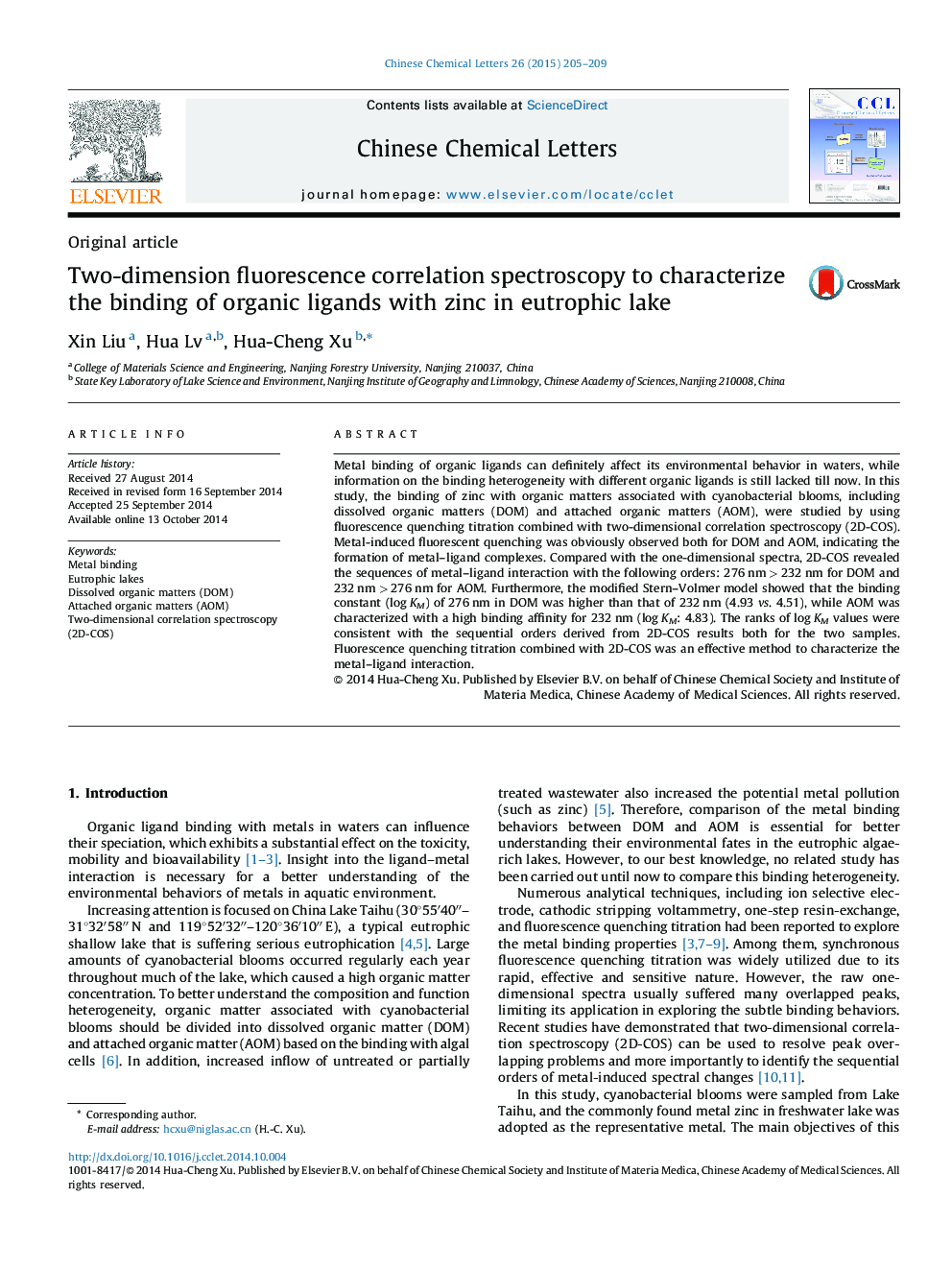| Article ID | Journal | Published Year | Pages | File Type |
|---|---|---|---|---|
| 1254081 | Chinese Chemical Letters | 2015 | 5 Pages |
Metal binding of organic ligands can definitely affect its environmental behavior in waters, while information on the binding heterogeneity with different organic ligands is still lacked till now. In this study, the binding of zinc with organic matters associated with cyanobacterial blooms, including dissolved organic matters (DOM) and attached organic matters (AOM), were studied by using fluorescence quenching titration combined with two-dimensional correlation spectroscopy (2D-COS). Metal-induced fluorescent quenching was obviously observed both for DOM and AOM, indicating the formation of metal–ligand complexes. Compared with the one-dimensional spectra, 2D-COS revealed the sequences of metal–ligand interaction with the following orders: 276 nm > 232 nm for DOM and 232 nm > 276 nm for AOM. Furthermore, the modified Stern–Volmer model showed that the binding constant (log KM) of 276 nm in DOM was higher than that of 232 nm (4.93 vs. 4.51), while AOM was characterized with a high binding affinity for 232 nm (log KM: 4.83). The ranks of log KM values were consistent with the sequential orders derived from 2D-COS results both for the two samples. Fluorescence quenching titration combined with 2D-COS was an effective method to characterize the metal–ligand interaction.
Graphical abstractFluorescence quenching titration combined with 2D-COS was an effective method to characterize the metal–ligand interaction.Figure optionsDownload full-size imageDownload as PowerPoint slide
